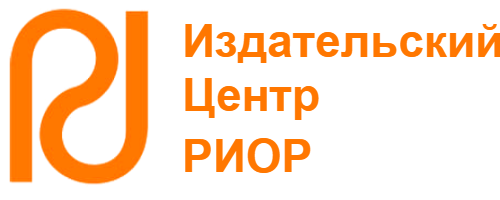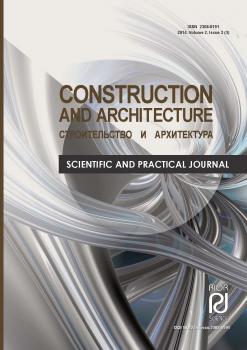Rostov-na-Donu, Rostov-on-Don, Russian Federation
Rostov-na-Donu, Rostov-on-Don, Russian Federation
Rostov-on-Don, Rostov-on-Don, Russian Federation
from 01.01.2017 until now
stanica Leningradskaya, Krasnodar, Russian Federation
Rostov-na-Donu, Rostov-on-Don, Russian Federation
Rostov-na-Donu, Rostov-on-Don, Russian Federation
UDC 69
CSCSTI 67.09
CSCSTI 67.01
Russian Classification of Professions by Education 08.06.01
Russian Library and Bibliographic Classification 383
Russian Library and Bibliographic Classification 308
BISAC TEC005000 Construction / General
The analysis of relaxation processes in water activated by thermal or ultraviolet radiation has been carried out. The activation of the mixing water leads to an earlier hardening of the cement. At the same time, activated water loses its properties with a relaxation time, which is equal to the activity time of melt water, which is explained by the common reasons for the origin of the increased reaction properties of activated water and melt water. These properties are due to the fact that activation increases the content of free water molecules. In the normal state, some of the water molecules enter the voids of fractal-clathrate structures. During thermal or radiation activation processes, characterized by certain relaxation times, these structures are destroyed, and free water molecules are released. But after the termination of activation, relaxation processes take place to restore thermodynamically equilibrium fractal-clathrate structures, and part of the free water is again captured by these structures. Therefore, the reactivity of water after the termination of activation decreases.
ultraviolet irradiation, fractal-clathrate structure, free water, concrete strength
1. Zarembo V.I. Ispol'zovanie slabyh impul'sov elektricheskogo toka v tehnologii izgotovleniya betonnyh i zhelezobetonnyh izdeliy i sooruzheniy: Ch.1 [The use of weak pulses of electric current in the technology of manufacturing concrete and reinforced concrete products and structures: Part 1]. Stroitel'nye materialy, oborudovanie, tehnologii XXI veka [Building materials, equipment, technologies of the XXI century]. 2004, I. 10, pp. 58-59.
2. Pavlov A.N. Prochnost' penobetona pri vozdeystvii peremennogo elektricheskogo polya [Strength of foam concrete when exposed to an alternating electric field]. Nauchnoe obozrenie [Scientific Review]. 2015, I. 10, pp. 147-150.
3. Evtushenko E.I. Aktivacionnye processy v tehnologii stroitel'nyh materialov. Nekotorye elementy strukturnoy dinamiki [Activation processes in building materials technology. Some elements of structural dynamics]. Belgorod: Izd-vo BelGTU [BelSTU Publishing House], 2003. 195 p.
4. Prokopec V.S. Vliyanie mehanoaktivacionnogo vozdeystviya na aktivnost' vyazhuschih veschestv [Influence of mechanoactivation effect on the activity of binders] // Stroitel'nye materialy [Building materials]. 2003, I. 9, pp. 28-29.
5. Yadykina V.V. Upravlenie processami formirovaniya i kachestvom stroitel'nyh kompozitov s uchetom sostoyaniya poverhnosti dispersnogo syr'ya [Management of the formation processes and the quality of building composites taking into account the state of the surface of dispersed raw materials]. M: Izd. ASV [ASV Publishing House]. 2009. 374 p.
6. Pavlov A.N. Prochnost' penobetona, aktivirovannogo maloenergoemkim peremennym elektricheskim polem [Strength of foam concrete activated by low-energy-consuming alternating electric field]. Stroitel'stvo - 2015: Sovremennye problemy stroitel'stva. Mat. mezhdunar. nauch.-prakt. konf. FGBOU VPO «RGSU» [Construction - 2015: Modern problems of construction. Mat. int. scientific-practical conf. FSBEI HPE "RSCEU"]. Rostov-on-Don, 2015, pp. 402-404.
7. Shcherban' E.M. Effektivnost' elektrofizicheskoy aktivacii penobetonnyh smesey [Efficiency of electrophysical activation of foam concrete mixtures]. Inzhenernyy vestnik Dona [Engineering journal of Don]. 2013, I. 4 URL: http://www.ivdon.ru/ru/magazine/archive/n4y2013/2193.
8. Kudyakov A.I. Uluchshenie kachestva cementnogo kamnya putem mnogochastotnoy ul'trazvukovoy aktivacii vody zatvoreniya [Improving the quality of cement stone by multifrequency ultrasonic activation of mixing water]. Vestnik TGASU [Bulletin of TUACE]. 2012, I. 3, pp. 143-152.
9. Guyumdzhyan P.P. Uluchshenie svoystv betona putem mehanicheskoy obrabotki vody zatvoreniya [Improving concrete properties by mechanical treatment of mixing water]. Vestnik TGASU [Bulletin of TUACE]. 2010, I. 2, pp. 154-161.
10. Aubakirova I.U. Effektivnost' aktivacii vody zatvoreniya uglerodnymi nanochasticami [Efficiency of activation of mixing water by carbon nanoparticles]. Inzhenerno-stroitel'nyy zhurnal [Magazine of Civil Engineering]. 2009, I. 1(3), pp. 40-45.
11. Slabozhanin G.D. O vliyanii UF-oblucheniya vody zatvoreniya na prirost prochnosti cementnogo kamnya [On the influence of UV irradiation of mixing water on the strength gain of cement stone]. Vestnik TGASU [Bulletin of TUACE]. 2009, I. 2, pp. 102-105.
12. Pavlov A.N. Fraktal'nye aspekty vliyaniya ul'trafioletovogo oblucheniya vody zatvoreniya na prochnost' cementnogo kamnya [Fractal aspects of the effect of ultraviolet irradiation of mixing water on the strength of cement stone]. Vestnik Evraziyskoy nauki [The Eurasian Scientific Journal]. 2018, I. 3, V. 10 URL: https://esj.today/PDF/27SAVN318.pdf.
13. Smirnov A.N. Struktura vody: gigantskie geterofaznye klastery vody [Water structure: giant heterophase water clusters]. Himiya i tehnologiya vody [Chemistry and Water Technology ]. 2005, I. 2, pp. 11-37.
14. Smirnov A.N. Nadmolekulyarnye kompleksy vody: «emulony» [Supramolecular complexes of water: "emulons"]. Fizika zhivogo [Physics of the living]. 2010, I. 18(2), pp. 23-33.
15. Pavlov A.N. Vliyanie temperatury na fraktal'nye struktury vody [Influence of temperature on fractal structures of water]. Nauka i Mir [Science and the World]. 2018, I. 6(58), V. 2, pp. 17-21.
16. Garibov A.A. Fotoliz N2O i SO2 na poverhnosti grafitopodobnogo nitrida bora [Photolysis of H2O and CO2 on the surface of graphite-like boron nitride]. Fizika-riyaziiyat və texnika elmləri seriyas. 2005, I. 5, pp.149-151.
17. Lobyshev V.I. Voda kak sensor slabyh vozdeystviy fizicheskoy i himicheskoy prirody [Water as a sensor of weak physical and chemical influences]. Ros. him. zh. [Russian chemical journal]. 2007, V. LI, I. 1, pp. 107-114.
18. Loganina V.I. Povyshenie aktivnosti vody zatvoreniya cementnyh sistem akusticheskim polem [Increasing the activity of mixing water for cement systems by an acoustic field]. Stroitel'nye materialy [Building materials]. 2008, I. 10, pp. 14-16.
19. Vetrenko T.G. Vliyanie mehanicheskoy aktivacii na svoystva vody [Effect of mechanical activation on water properties]. Uchenye zapiski inzh.-stroit. fakul'teta. IGASU [Scientific notes engineer-building faculty. ISUACE]. 2008, I. 4, pp. 68-71.
20. Wayne R. Osnovy i primeneniya fotohimii [Fundamentals and Applications of Photochemistry]. M.: Mir. 1991. 304 p.
21. Ignat'ev V.K. Issledovanie uslovnoy vyazkosti termicheski aktivirovannoy vody [Study of the conditional viscosity of thermally activated water]. Biofizika [Biophysics]. 2012, V. 13, pp. 819-831.



















